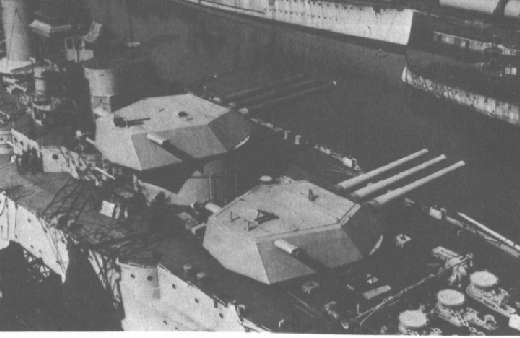

It seemed, however, that although a 356mm caliber would be a new measure
of destructiveness, it would also make obsolete about every ship yet build,
including the Navy's new Utah class now being build.
Alas,
calculations revealed the 14" gun to be more effective than even the currently
build 12" L/50, and the gun was adapted for the second-next class to be
build, the New Yorks. Arkansas and Wyoming would retain
the 305mm gun and add another turret for a total of twelve such weapons
as opposed to Utah's ten.
The 14" L/45 was mounted on New York and Texas, Nevada
and Oklahoma, and Pennsylvania and Arizona.
Some
difficulties were apparently encountered as the L/50 gun is said to have
"remedied the serious constructional defects of the first 14"...", but
there is no indication just what these difficulties may have been -- any
information will be much appreciated.
All guns per turret were fitted in one cradle, causing problems in case
of damaging hits to one gun. However, this was mere theory - in combat,
no such damage was encountered.
|
|
Year of Construction:
1907-ish
Bore: 365mm / 14in Weight of gun: 63.6 t / 62.6 tons Weight of barrel: ???? tons / ???? tons Length of gun: 16318 mm / 642.45 ins. Length of bore: 15855mm / 624.2 ins. Wt. of projectile: 680 kg / 1500 lbs Max. Range: 31.360 km / 34.300 yds at 30° elevation Ceiling: Not AA capable Max. Elevation: 30° Rate of Fire: 1-2 rounds/min |